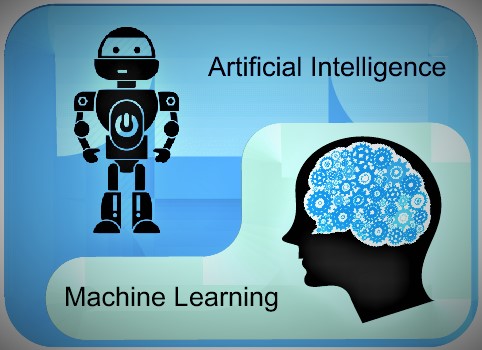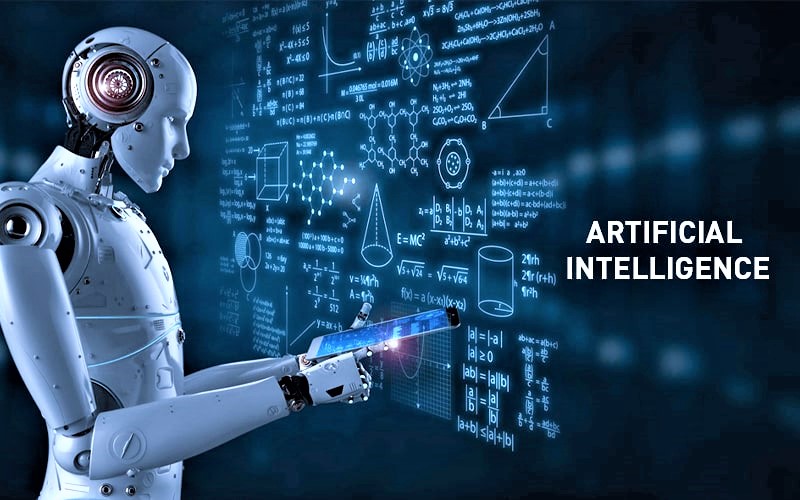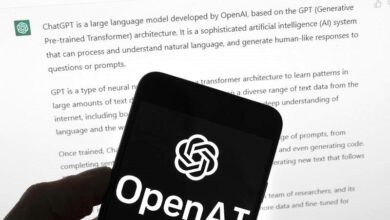Machine Learning Introduction: A Comprehensive Guide
What is Machine Learning? Definition, Types, Applications

Machine Learning: A subset of AI called machine learning gives computers the ability to learn from data, predict the future, and get better over time. It can be used in a wide range of fields, including healthcare, finance, and entertainment. Bias reduction and data privacy are difficulties. More interpretable models and improvements in reinforcement learning are in store for the future.

the realm of modern technology, one concept that has risen to prominence and is reshaping the landscape of various industries is “Machine Learning” (ML). Machine learning is a subset of artificial intelligence (AI) that focuses on the development of algorithms and models that enable computers to learn from data and make predictions or decisions without being explicitly programmed. This revolutionary field has the potential to transform industries, drive innovation, and usher in a new era of automation and intelligent decision-making.
The Basics of Machine Learning
At its core, machine learning aims to enable computers to learn and improve from experience, much like humans do. This is achieved by providing the computer with large volumes of data and allowing it to identify patterns, relationships, and insights within that data. The learning process involves adjusting the internal parameters of a model to minimize the difference between its predictions and the actual outcomes in the training data.
Machine learning encompasses three main types:
Supervised Learning:
In this approach, the model is trained on labeled data, where the inputs are paired with the correct outputs. The model then learns to make predictions based on new, unseen data. This is commonly used in tasks like image recognition, speech recognition, and recommendation systems.
Unsupervised Learning:
Here, the model is given unlabeled data and aims to find inherent patterns or groupings within the data. Clustering and dimensionality reduction are common applications of unsupervised learning, helping uncover hidden structures in data.
Reinforcement Learning:
This type involves training a model to make a sequence of decisions by rewarding or punishing it based on its actions. It’s widely used in robotics, game-playing, and autonomous systems.
Key Concepts and Techniques
Machine learning involves a plethora of concepts and techniques that contribute to its functionality and effectiveness:
Data Preprocessing:
High-quality data is essential for accurate learning. Preprocessing involves tasks like data cleaning, normalization, and feature engineering to enhance the model’s performance.
Feature Selection and Extraction:
The process of selecting relevant features or transforming raw data into a more suitable representation for training is crucial. Techniques like Principal Component Analysis (PCA) and word embeddings play a significant role here.
Model Selection and Training:
Choosing an appropriate algorithm or model architecture is vital. This could range from decision trees and support vector machines to more complex deep neural networks. The model is then trained using optimization algorithms, such as gradient descent.
Validation and Testing:
After training, the model’s performance is evaluated on separate validation and testing datasets to ensure it generalizes well to new, unseen data.
Overfitting and Regularization:
Overfitting occurs when a model performs well on training data but poorly on new data. Regularization techniques, like L1 and L2 regularization, help prevent overfitting by adding constraints to the model.
Hyperparameter Tuning:
Models have various hyperparameters that affect their performance. Tuning these hyperparameters is an iterative process to find the best configuration.
Ensemble Methods:
Combining multiple models can lead to improved predictions. Techniques like bagging (Bootstrap Aggregating) and boosting create a stronger overall model by aggregating the outputs of individual models.
Applications Across Industries
Machine learning’s transformative potential extends to a wide range of industries:
Healthcare:
ML aids in diagnosing diseases, analyzing medical images, predicting patient outcomes, and drug discovery.
Finance:
It’s used for fraud detection, algorithmic trading, credit scoring, and risk assessment.
Retail:
ML powers recommendation systems, demand forecasting, inventory management, and customer sentiment analysis.
Manufacturing:
ML optimizes supply chains, predicts equipment maintenance needs, and enhances quality control.
Transportation:
Autonomous vehicles, route optimization, and traffic prediction leverage ML techniques.
Entertainment:
Streaming services employ ML for content recommendation, while game developers use it for adaptive gameplay.
Challenges and Future Directions
While machine learning holds tremendous promise, it also faces challenges:
Data Privacy and Ethics:
The use of personal data raises concerns about privacy and ethical considerations, demanding responsible data usage.
Interpretability:
Complex models like deep neural networks can be difficult to interpret, making it challenging to understand how decisions are made.
Bias and Fairness:
Models can inherit biases present in the training data, leading to unfair or discriminatory outcomes.
Data Quality:
The quality and relevance of data directly impact the model’s accuracy and effectiveness.

In the future, machine learning is expected to evolve further:
Explainable AI (XAI):
Research is focused on making ML models more interpretable and understandable, increasing transparency and accountability.
Federated Learning:
This approach enables training models across decentralized devices while preserving data privacy.
Reinforcement Learning Advancements:
As reinforcement learning matures, it could lead to breakthroughs in robotics, personalized medicine, and more.
Conclusion
Machine learning has evolved from a theoretical concept to a revolutionary force driving innovation across industries. Its ability to learn from data, make predictions, and adapt to new situations is transforming the way we work, live, and interact with technology. As machine learning continues to advance, its impact on society is bound to be profound, reshaping industries and creating new opportunities while also raising important ethical and societal considerations.
frequently asked questions
What is Machine Learning?
Machine Learning (ML) is a subset of artificial intelligence (AI) that focuses on developing algorithms and models that enable computers to learn from data and make predictions or decisions without being explicitly programmed. It involves training models on data to identify patterns and relationships, allowing them to improve their performance over time.
What are the types of Machine Learning?
There are three main types of machine learning:
Supervised Learning:
Models learn from labeled data to make predictions or classifications.
Unsupervised Learning:
Models find patterns and structures in unlabeled data.
Reinforcement Learning:
Models learn to make sequences of decisions by receiving rewards or punishments based on their actions.
What is the process of training a Machine Learning model?
The process typically involves:
Collecting and preprocessing data.
Selecting a suitable algorithm or model architecture.
Training the model on the data using optimization techniques.
Evaluating the model’s performance on separate validation and test datasets.
Fine-tuning hyperparameters to optimize the model’s performance.
What are some applications of Machine Learning?
Machine learning has diverse applications, including:
Healthcare:
Diagnosis, medical imaging analysis, and drug discovery.
Finance:
Fraud detection, algorithmic trading, credit scoring.
Retail:
Recommendation systems, demand forecasting, inventory management.
Manufacturing:
Quality control, predictive maintenance, and supply chain optimization.
Transportation:
Autonomous vehicles, route optimization, traffic prediction.
Entertainment:
Content recommendation, game AI, adaptive gameplay.
How do Machine Learning models handle bias and fairness?
Machine learning models can inadvertently inherit biases present in the training data, leading to unfair outcomes. Researchers are actively working on techniques to identify, measure, and mitigate bias in models. Fairness-aware algorithms and data preprocessing methods aim to ensure more equitable results.
What is Explainable AI (XAI)?
Explainable AI refers to the effort of making machine learning models more transparent and understandable to humans. This is crucial for building trust and accountability, especially in applications where decisions impact individuals’ lives, such as healthcare and finance.
What are some challenges in Machine Learning?
Key challenges in machine learning include data privacy concerns, model interpretability, bias mitigation, and data quality. Ensuring models are robust, reliable, and ethically sound requires addressing these challenges.
How is Machine Learning different from traditional programming?
Traditional programming involves writing explicit instructions for a computer to follow. In contrast, machine learning focuses on training models using data, allowing the computer to learn patterns and relationships on its own and make decisions based on that learning.
What is the future of Machine Learning?
The future of machine learning holds exciting possibilities, including more interpretable models, advancements in reinforcement learning, and applications in fields like personalized medicine, decentralized learning, and more.
How can I start learning about Machine Learning?
You can start by learning the fundamentals of programming, mathematics (especially linear algebra and calculus), and statistics. Online courses, tutorials, and books dedicated to machine learning, such as those on platforms like Coursera, edX, and Khan Academy, can provide a solid foundation for your journey into this exciting field.



